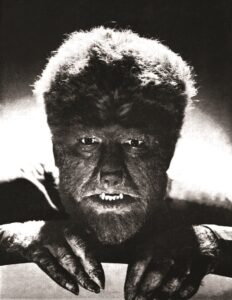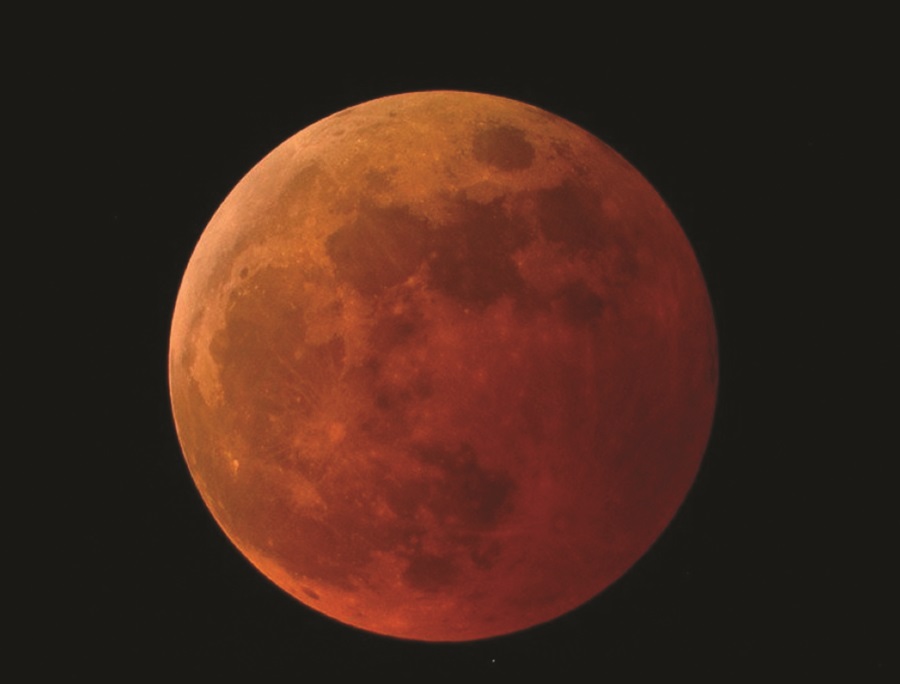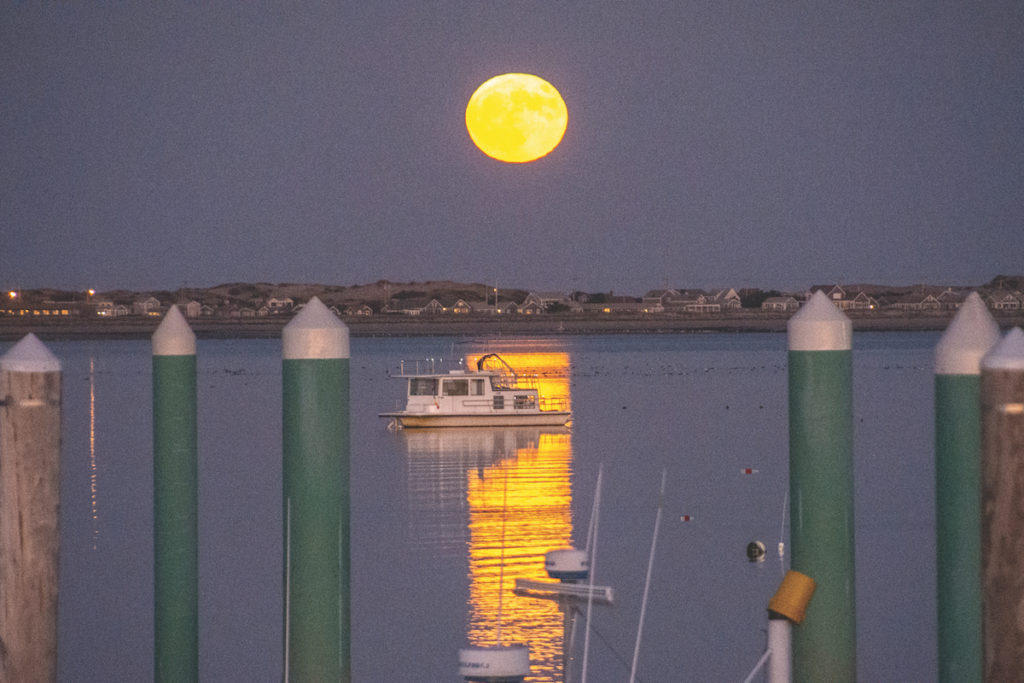Trick-or-treaters will be safe from werewolves this year, as the full Moon falls on Oct. 28. Halloween night will have a lovely, 89-percent-illuminated Moon rising as darkness falls, shining its silver light on any ghosts, ghouls, and goblins roaming about. It should provide a fitting ambience for the spookiest night of the year.
The Moon inspires myths and legends, often with a scary or eerie twist. Maybe that’s because there is no other nighttime celestial object to match its size and brightness, and nighttime is when our hidden fears, kept at bay by the Sun, creep out to whisper all kinds of dark imaginings. Connecting the Moon with those whispers is an easy step to take.

Consider werewolves — or if you prefer a fancier term, lycanthropes. You’ll find tales of shape-shifting humans in many cultures, but the modern English werewolf descends from the Old English wer-wulf, which in turn descends from the Proto-Germanic wira-wulfaz: man-wolf. The Romans called them versipellis, or turn-skins. Variations of the creature exist in the folklore of the Celts, the ancient Greeks, India, Mesopotamia, and other cultures dating back thousands of years.
The details vary, but basically a werewolf is a person who can change shape into a wolf (or wolf-human hybrid). When in wolf form, they are usually wild, ferocious, and hungry for human flesh. But not always. In some legends, werewolves are wise shamans who are honored guardians of sacred lands.
Most Americans learned from movies that people afflicted with lycanthropy take on their wolf forms when there’s a full Moon. This idea, though, is rarely found in the many variations of the werewolf legend. The full Moon-werewolf connection became horror canon only with the 1943 movie Frankenstein Meets the Wolf Man.
Unless you were a scholar of obscure French folktales (in which there are references to full Moon transformations), you wouldn’t have connected werewolves and full Moons until you saw Lon Chaney Jr. undergo his terrifying (for the time) transformation on the big screen. The rich imagination of screenwriter Curt Siodmak has left a lasting mark on modern popular consciousness.
Then there’s lunacy. We get this word from the Latin lunaticus, which itself contains luna, or moon. Lunacy and lunatics are now nonmedical and pejorative terms for irrational behavior, but the terms originated in ancient medical practice. Some doctors of the ancient world (and well into the Middle Ages and beyond) believed that certain psychiatric and neurologic disorders, such as schizophrenia and epilepsy, were caused by the Moon. These patients were categorized as lunaticus, roughly interpreted as “living on the Moon.”
Before you laugh at the doctors of centuries past, consider the common modern notion that people act wild when there’s a full Moon. You’ve probably heard that traffic accidents, violent behavior, and psychiatric cases at hospital emergency departments all spike on nights of a full Moon. But none of those correlations are real. Researchers have found no statistically meaningful correlation between the full Moon and erratic human behavior.

The reason it can seem as if there’s a connection is called illusory correlation. When two or more significant events occur at the same time, we tend to see connections between them. If we notice a bright full Moon in the sky and hear about a fight breaking out between parents at a children’s soccer game that same evening, we may imagine a correlation between the two. But that doesn’t mean they truly are connected; it’s just how our minds work. We look for patterns.
(And as a parent of a youth soccer player, I can assure you that sideline fights between parents occur on nights of crescent moons, when there’s no moon, and even on sunny afternoons.)
One last Halloween-astronomy crossover topic I want to raise is that of the blood Moon. This is when the full Moon, normally bright white, turns dull red. It’s nothing to be afraid of: a blood Moon is simply another name for a total lunar eclipse.
Lunar eclipses occur when the Sun, Earth, and Moon all align, with Earth in the middle. Our shadow in space then covers the lunar surface for a short time. This accounts for the dimming of its usual reflected light. The red tint is the small amount of sunlight that slips past Earth’s edges and through our atmosphere, where the blue and violet wavelengths are scattered, leaving only orange and red wavelengths to reach the Moon and be reflected back at us. While we’re on this subject: mark your calendars for the next total lunar eclipse on March 13, 2025.
Terrifying transformations into werewolves. Full Moons causing lunacy. Blood Moons. Maybe our modern imaginations are not so different from those of the Bronze Age Celts or ancient Greeks. This Halloween, whether you’re trick-or-treating yourself or escorting younger goblins, take a moment to appreciate the not-quite-full Moon. It should be perfectly safe. Or is it? Awooo-ooooo!

